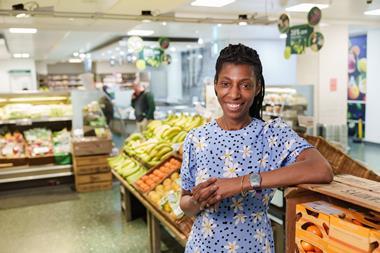Leeds Market is a laudable example of a vibrant independent retail hub, says Joanna Blythman
With Mary Portas undertaking a government review of the future of the high street, and Labour and the Lib Dems calling for local authorities to be given more power to resist the imposition of new supermarkets, the fightback against the retail dominance of the multiples has got its second wind.
Bristol isn't the only place where people feel mutinous about the Tesco-isation of Britain. Supermarkets' creeping occupation of our high streets has been disastrous, turning many once thriving, diverse zones into deadbeat line-ups of chain stores, tanning parlours and charity shops.
A number of creative ideas have been put forward to 'bring back the bustle' in our town centres, everything from redistributing a levy on multiples to small shopkeepers to encouraging 'meanwhile uses' of empty shops. One off-the-peg model that's ripe for development is the traditional indoor market, like the one on the Kirkgate in Leeds. The city council has had the wit to invest in it, as well as in boutique retail developments, like the chic Victoria Quarter, allowing a cluster of small businesses to thrive with affordable rents. Occupancy is high. Leeds Market now has more than 400 stalls inside and 200 outside. As another indication that such locations are now very much where it's at, Jamie Oliver has set up a Ministry of Food there.
Footfall in Leeds Market is excellent because locals can find really fresh food for a fraction of the supermarket price. The fish section is particularly inspiring and the fruit and vegetables heartwarmingly cheap. And you can buy lots of useful, ordinary, but often frustrating difficult-to-find non-food things there too, like curtain hooks, which saves you making one of those brain-numbing, petrol-guzzling trips to out-of-town shopping centre hell.
Leeds Market provides an anchor in a city that seems to buzz with independent retail life and its liveliness spills out on to surrounding streets. Many cities and towns still have a historic building that could be reinvented as an indoor market. It doesn't take much.
In London's Brixton, the former Granville Arcade, renamed Brixton Village, part of the old market, is the talk of the town. And, as the Metro's food writer points out: "What has been achieved in a short space of time is little short of miraculous."
Joanna Blythman is a food journalist and author of Bad Food Britain
With Mary Portas undertaking a government review of the future of the high street, and Labour and the Lib Dems calling for local authorities to be given more power to resist the imposition of new supermarkets, the fightback against the retail dominance of the multiples has got its second wind.
Bristol isn't the only place where people feel mutinous about the Tesco-isation of Britain. Supermarkets' creeping occupation of our high streets has been disastrous, turning many once thriving, diverse zones into deadbeat line-ups of chain stores, tanning parlours and charity shops.
A number of creative ideas have been put forward to 'bring back the bustle' in our town centres, everything from redistributing a levy on multiples to small shopkeepers to encouraging 'meanwhile uses' of empty shops. One off-the-peg model that's ripe for development is the traditional indoor market, like the one on the Kirkgate in Leeds. The city council has had the wit to invest in it, as well as in boutique retail developments, like the chic Victoria Quarter, allowing a cluster of small businesses to thrive with affordable rents. Occupancy is high. Leeds Market now has more than 400 stalls inside and 200 outside. As another indication that such locations are now very much where it's at, Jamie Oliver has set up a Ministry of Food there.
Footfall in Leeds Market is excellent because locals can find really fresh food for a fraction of the supermarket price. The fish section is particularly inspiring and the fruit and vegetables heartwarmingly cheap. And you can buy lots of useful, ordinary, but often frustrating difficult-to-find non-food things there too, like curtain hooks, which saves you making one of those brain-numbing, petrol-guzzling trips to out-of-town shopping centre hell.
Leeds Market provides an anchor in a city that seems to buzz with independent retail life and its liveliness spills out on to surrounding streets. Many cities and towns still have a historic building that could be reinvented as an indoor market. It doesn't take much.
In London's Brixton, the former Granville Arcade, renamed Brixton Village, part of the old market, is the talk of the town. And, as the Metro's food writer points out: "What has been achieved in a short space of time is little short of miraculous."
Joanna Blythman is a food journalist and author of Bad Food Britain









No comments yet